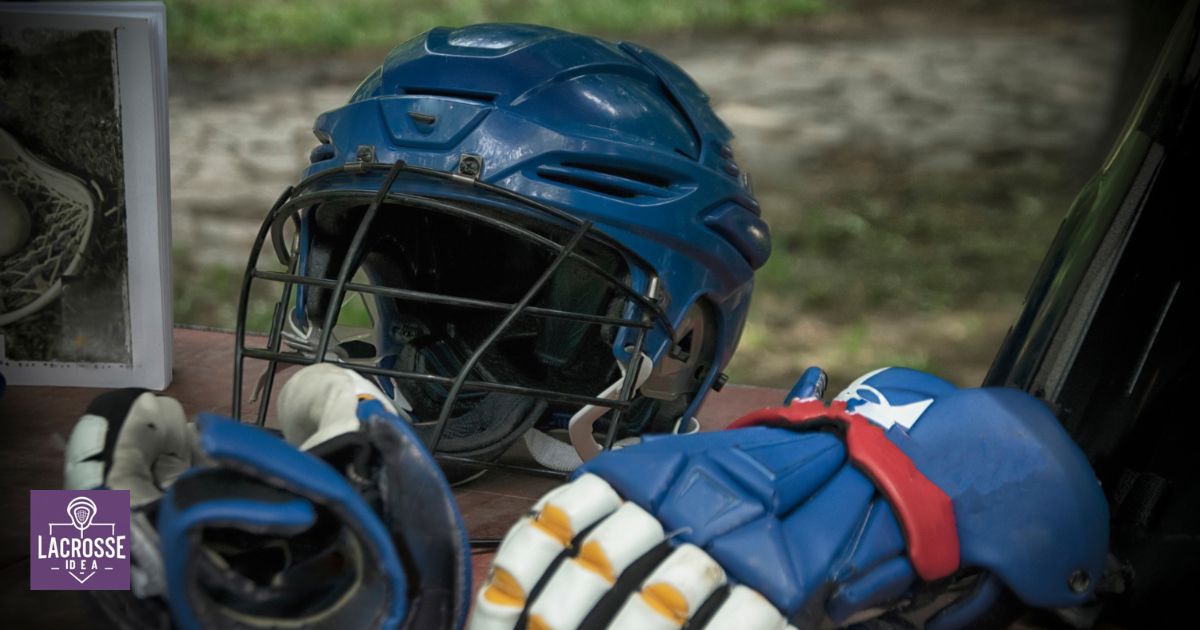In a world where the Olympic Games unite nations and showcase diverse sporting disciplines, one question lingers: why is lacrosse not among them? This article delves into the intricate web of factors that have prevented the inclusion of this fast-paced, stick-based game on the international stage. Through an exploration of global participation, infrastructure limitations, historical exclusion, and more, we seek to unravel the complexities surrounding lacrosse’s absence from the coveted Olympic program. Join us as we uncover the path towards potential Olympic inclusion for this culturally significant sport.
Key Takeaways
- Lack of global participation and limited infrastructure hinder lacrosse’s chances of Olympic inclusion.
- Lacrosse faces challenges as a niche sport in a crowded Olympic program and historical exclusion from the Olympics.
- Meeting the IOC’s criteria for Olympic inclusion is a significant challenge for lacrosse’s international federation.
- Lacrosse faces competition from established Olympic sports and financial implications of Olympic participation.
Lack Of Global Participation
Due to its limited global participation, lacrosse has not been included as an Olympic sport. While lacrosse has a rich history and is widely played in North America, it lacks the same level of global participation as other sports that are included in the Olympic Games. Lacrosse is predominantly popular in countries like the United States and Canada, where it is deeply ingrained in their cultural and sporting traditions.
However, in many other parts of the world, lacrosse remains relatively unknown and has not gained widespread popularity or infrastructure for its development. Olympic inclusion requires a sport to have a significant global presence and participation, reflecting the values of unity and inclusivity. Therefore, until lacrosse achieves greater global participation, it is unlikely to be considered for inclusion as an Olympic sport.
Limited Infrastructure
Furthermore, the limited infrastructure surrounding lacrosse in many countries outside of North America hinders its potential for Olympic inclusion. Lacrosse, with its unique field requirements and equipment needs, requires dedicated facilities and resources to thrive. Unfortunately, in many parts of the world, lacrosse is still relatively unknown and lacks the necessary infrastructure to support its growth and development.
To illustrate this point, consider the following table:
| Infrastructure Challenges | Potential Solutions |
|---|---|
| Lack of lacrosse fields | Construct new fields or repurpose existing ones |
| Limited access to lacrosse equipment | Develop partnerships with equipment manufacturers and distributors |
| Lack of trained coaches and officials | Establish coaching and officiating programs to educate and train individuals |
Without a strong infrastructure in place, it becomes difficult for lacrosse to gain traction and attract participation. This limited accessibility and lack of resources make it challenging for lacrosse to establish itself as a mainstream sport in many countries.
In the next section, we will explore how being a niche sport in a crowded Olympic program adds further complexity to lacrosse’s path towards Olympic inclusion.
Niche Sport In A Crowded Program
Lacrosse faces challenges as a niche sport in a crowded Olympic program. With a limited number of sports allowed in the Olympics, it becomes difficult for lacrosse to secure a spot among the more established and popular sports. The Olympic program already includes a wide range of sports that have a long history and a large following, such as athletics, swimming, and gymnastics.
These sports have become a vital part of the Olympic tradition, attracting a global audience and generating significant revenue. In contrast, lacrosse is still a relatively niche sport, primarily popular in North America and Europe. While it has been growing in popularity in recent years, lacrosse struggles to compete with the established Olympic sports in terms of global appeal and viewership. As a result, it faces an uphill battle to secure a place in the Olympic program.
Historical Exclusion From Olympics
Throughout its history, lacrosse has faced exclusion from the Olympic Games. Despite its rich cultural significance and global popularity, the sport has been overlooked by the International Olympic Committee (IOC) when selecting events for the prestigious competition. This exclusion has been a source of disappointment and frustration for lacrosse enthusiasts worldwide, who have longed to see their beloved sport showcased on the Olympic stage.
The historical exclusion of lacrosse from the Olympics can be attributed to several factors. Firstly, the IOC’s focus on traditional and popular sports has limited the inclusion of newer and less mainstream activities, such as lacrosse. Additionally, the lack of widespread international participation and standardized rules and regulations have also played a role in the sport’s exclusion.
However, despite these challenges, lacrosse continues to grow in popularity and gain recognition as a global sport. Efforts are being made to promote the sport’s inclusivity and increase its chances of being considered for future Olympic Games. With the ongoing commitment and passion of lacrosse communities worldwide, there remains hope that one day lacrosse will find its place among the Olympic elite.
IOC Criteria For Olympic Inclusion
The International Olympic Committee (IOC) determines the inclusion of sports in the Olympic Games based on specific criteria and guidelines. The IOC has a set of stringent requirements that a sport must meet in order to be considered for inclusion. These criteria include worldwide popularity, participation levels, governance, and anti-doping efforts.
The IOC seeks sports that have a global appeal and can attract a wide audience. They also prioritize sports that are practiced by both men and women, and those that promote gender equality. Additionally, the IOC looks for sports that uphold the Olympic values of fair play, respect, and solidarity. While lacrosse is a growing sport with a rich history, it has yet to meet the IOC’s criteria for Olympic inclusion.
Challenges For Lacrosse’s International Federation
Despite the evolving popularity and rich history of the sport, the International Federation for Lacrosse faces ongoing challenges in meeting the criteria set by the IOC for Olympic inclusion. These challenges can be attributed to several factors. First, lacrosse lacks widespread global participation compared to other sports, making it difficult to demonstrate its universality.
Lacrosse struggles to secure the required number of National Olympic Committees (NOCs) that actively participate in the sport. Furthermore, the lack of a standardized set of rules and regulations across different lacrosse governing bodies globally hampers the sport’s ability to present a cohesive and unified front to the IOC.
Lastly, financial constraints and limited resources hinder the development of lacrosse programs in countries where the sport is less established, impacting its potential for growth and recognition on the Olympic stage. Overcoming these challenges will require collaborative efforts from lacrosse organizations worldwide to address the sport’s shortcomings and actively engage with the IOC to meet the necessary criteria for Olympic inclusion.
Competition From Established Olympic Sports
Facing competition from established Olympic sports, lacrosse must overcome additional hurdles in its quest for Olympic inclusion. The International Olympic Committee (IOC) has strict criteria for adding new sports to the Olympic program, and one of the key factors is the level of competition and global popularity. Established Olympic sports such as athletics, swimming, and gymnastics have a long history and a large following, making it challenging for lacrosse to compete for a spot.
These sports not only have a strong presence in the Olympic Games but also attract significant media attention and sponsorship deals. Lacrosse, on the other hand, is still growing in popularity and lacks the global recognition that some of these established sports enjoy. However, lacrosse’s unique attributes and growing international interest may help it overcome these hurdles and secure a place in the Olympic Games. As we delve into the financial implications of Olympic participation, it becomes apparent that lacrosse’s inclusion would not only bring recognition but also bring financial benefits to the sport.
Financial Implications Of Olympic Participation
Lacrosse’s potential inclusion as an Olympic sport raises important considerations regarding the financial implications of participating in the Games. While being part of the Olympics can provide various benefits such as increased exposure and recognition for the sport, it also comes with significant financial costs. Olympic participation requires substantial investments in training facilities, equipment, coaching staff, and travel expenses for athletes.
There are expenses related to compliance with the International Olympic Committee’s rules and regulations. These financial burdens can be particularly challenging for smaller or less financially established lacrosse programs, making it difficult for them to compete at the Olympic level. Moreover, the lack of financial support and investment in lacrosse as an Olympic sport can hinder its growth and development on a global scale. Therefore, careful consideration of the financial implications is crucial before making lacrosse an Olympic sport.
Lack Of Government Support
A significant hindrance to lacrosse’s inclusion as an Olympic sport is the lack of substantial government support. While lacrosse has gained popularity in many countries, government support plays a crucial role in determining whether a sport becomes an Olympic event. Governments provide funding, resources, and infrastructure necessary for the development and promotion of sports.
Without government support, lacrosse struggles to reach its full potential and establish itself as a mainstream sport on the international stage. Lack of government support also affects the recruitment and training of athletes, as well as the organization of national and international competitions. As a result, lacrosse faces an uphill battle in gaining recognition as an Olympic sport. However, another challenge it faces is the difficulty in standardizing rules and regulations, which will be discussed in the following section.
Difficulty In Standardizing Rules And Regulations
The absence of standardized rules and regulations poses a significant challenge for lacrosse’s potential inclusion as an Olympic sport. With different variations of the sport being played across the world, it becomes difficult to establish a universal set of rules that would ensure fairness and consistency in competition. Lacrosse is played in different formats, including field lacrosse, box lacrosse, and women’s lacrosse, each with its own unique rules and regulations.
This lack of uniformity makes it challenging for lacrosse to meet the International Olympic Committee’s requirement of standardized rules for a sport to be included in the Olympic program. In order to be considered for Olympic status, lacrosse would need to undergo a comprehensive effort to standardize its rules and regulations globally, ensuring a level playing field for all participants and promoting a sense of belonging within the lacrosse community.
Lack Of Television Coverage And Media Exposure
Despite the challenges posed by the absence of standardized rules and regulations, lacrosse also faces the hindrance of limited television coverage and media exposure. Unlike popular sports such as football or basketball, lacrosse struggles to capture the attention of mainstream media, which has a significant impact on its potential as an Olympic sport. The lack of television coverage hampers the sport’s visibility, making it difficult for fans to follow and for potential athletes to become aware of its existence.
This limited exposure also affects the sport’s ability to attract sponsors and secure funding for development and promotion. Without media support, lacrosse struggles to gain the recognition and audience necessary for Olympic consideration. Nonetheless, the challenges faced by lacrosse in terms of media exposure are just one aspect of the larger issue of gender disparity in Olympic sports.
Gender Disparity In Olympic Sports
Gender disparity remains a prevalent issue within Olympic sports. Despite the progress made towards gender equality, there are still significant gaps in both participation and representation of female athletes. While the Olympic Games strive to promote inclusivity and diversity, the reality is that women’s sports often receive less attention, resources, and funding compared to their male counterparts. This disparity is evident in several areas, including media coverage, sponsorship opportunities, and prize money distribution.
Female athletes often face societal and cultural barriers that limit their access to training facilities, coaching, and support networks. As a result, they may struggle to reach their full potential and compete at the same level as their male counterparts. To address this issue, it is crucial for Olympic organizations, sponsors, and the media to prioritize equal opportunities and recognition for female athletes, providing a platform where they can showcase their talent and inspire future generations.
Lacrosse’s Indigenous Roots And Cultural Significance
Lacrosse, with its deep Indigenous roots and cultural significance, holds a unique place in the world of sports. Originating in North America, this ancient game has been played by Indigenous communities for centuries. It was not just a game, but a spiritual and ceremonial practice that fostered community cohesion and celebrated cultural identity. Today, lacrosse continues to be a symbol of Indigenous resilience and pride.
The game’s Indigenous origins give it a sense of belonging, connecting players to their heritage and ancestors. By embracing lacrosse, individuals can form a deeper understanding and appreciation for Indigenous cultures. It serves as a platform for cultural exchange, promoting unity and respect among different communities.
Despite its rich history and cultural significance, lacrosse has yet to be recognized as an Olympic sport. This exclusion denies Indigenous communities the opportunity to showcase their heritage and talents on a global stage. It is crucial that lacrosse, with its deep Indigenous roots, is acknowledged and celebrated in the international sporting community.
Potential Pathways For Olympic Inclusion
One potential pathway for lacrosse to become an Olympic sport is through international recognition and support. By gaining recognition from international sports organizations, such as the International Olympic Committee (IOC) and the International Lacrosse Federation (ILF), lacrosse can increase its chances of being included in the Olympic program. This recognition would require demonstrating that lacrosse meets the criteria set by the IOC, including widespread international participation and adherence to anti-doping regulations.
Securing support from national lacrosse associations and federations around the world is crucial in showcasing the global reach and popularity of the sport. Through collaboration and advocacy efforts, lacrosse can work towards achieving its Olympic dream and provide athletes from diverse backgrounds with a platform to showcase their skills and compete on the world stage.
| Potential Pathways for Olympic Inclusion | |
|---|---|
| Pathway 1 | International recognition and support |
| Pathway 2 | Meeting IOC criteria for inclusion |
| Pathway 3 | Securing support from national associations |
| Pathway 4 | Collaboration and advocacy efforts |
Frequently Asked Questions
What Are the Challenges Faced by Lacrosse’s International Federation in Promoting the Sport Globally?
The challenges faced by lacrosse’s international federation in promoting the sport globally include limited visibility, lack of funding, and competition from established sports. These obstacles hinder the sport’s growth and hinder its chances of becoming an Olympic sport.
How Does Lacrosse Compare to Other Established Olympic Sports in Terms of Competition and Popularity?
In terms of competition and popularity, lacrosse faces challenges compared to other established Olympic sports. Factors such as limited global participation, lack of international recognition, and insufficient infrastructure hinder its chances of being included in the Olympic Games.
What Are the Financial Implications for Lacrosse if It Were to Become an Olympic Sport?
The financial implications for lacrosse if it were to become an Olympic sport would be significant. The sport would likely receive increased funding and sponsorships, leading to greater exposure and potential growth in terms of participation and revenue.
Is There a Lack of Government Support for Lacrosse, and if So, How Does It Hinder Its Chances of Becoming an Olympic Sport?
Government support for lacrosse is lacking, hindering its chances of becoming an Olympic sport. This lack of support restricts the resources and funding needed for development and promotion, limiting the sport’s global recognition and appeal.
How Difficult Is It to Standardize the Rules and Regulations of Lacrosse on an International Level?
Standardizing the rules and regulations of lacrosse on an international level can be challenging due to the diverse nature of the sport and the varying interpretations and traditions within different regions.
Conclusion
In conclusion, lacrosse’s exclusion from the Olympic Games can be attributed to a lack of global participation, limited infrastructure, and its niche status in a crowded program. The historical exclusion, IOC criteria, lack of media exposure, gender disparity, and the sport’s indigenous roots also play a role. Although lacrosse faces significant challenges, there are potential pathways for Olympic inclusion, which could lead to its growth and recognition on a global scale like a rising sun casting its vibrant rays across the world.









